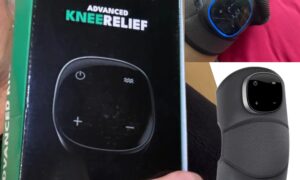Virtual Reality (VR) is no longer just a futuristic concept seen in sci-fi movies. Today, it’s a powerful technology revolutionizing various industries. From healthcare to education, VR is transforming traditional methods and introducing innovative ways to interact with and experience the world. This article explores ten significant ways VR is disrupting traditional industries, highlighting the benefits and potential future developments.
Healthcare:
Revolutionizing Medical Training and Patient Care
Medical Training
VR is making substantial strides in healthcare, particularly in medical training. Traditionally, medical students relied on textbooks, lectures, and limited hands-on practice. However, VR offers immersive, simulated environments where students can practice procedures without risk. This technology enables realistic training scenarios, improving skills and reducing errors.
Patient Care
VR is used for pain management and rehabilitation. Patients can be transported to calming environments or use VR for guided physical therapy exercises. These applications reduce the need for medication and enhance recovery outcomes, demonstrating VR’s potential to improve patient experiences and outcomes.
Education:
Creating Immersive Learning Experiences
Enhanced Engagement
Education is another industry benefiting from VR’s capabilities. VR provides immersive learning experiences that engage students more effectively than traditional methods. For instance, history lessons can become virtual tours of ancient civilizations, making learning more interactive and memorable.
Virtual Classrooms
Additionally, VR supports virtual classrooms, breaking down geographical barriers. Students from around the world can attend classes together, experiencing a sense of presence and interaction that traditional online platforms cannot match. This technology makes education more accessible and inclusive, fostering a global learning community.
Real Estate:
Transforming Property Showcasing and Sales
Virtual Tours
The real estate industry has embraced VR to offer virtual property tours. Potential buyers can explore properties from the comfort of their homes, saving time and resources. This technology allows for detailed inspections and a better sense of space than static photos or videos.
Design Visualization
Moreover, VR aids in design visualization. Architects and developers use VR to present their projects to clients, providing a realistic view of the final product. This capability enhances decision-making processes and ensures client satisfaction, ultimately driving sales and reducing project modifications.
Retail:
Enhancing Shopping Experiences
Virtual Stores
VR is enhancing shopping experiences through virtual stores. Customers can browse products in a virtual environment, simulating an in-store experience. This approach combines the convenience of online shopping with the interactive elements of physical stores.
Personalized Shopping
Furthermore, VR supports personalized shopping experiences. Retailers can create tailored virtual environments based on customer preferences, improving engagement and satisfaction. This personalization boosts sales and fosters customer loyalty, showing VR’s potential to revolutionize retail.
Tourism:
Offering Virtual Travel Experiences
Virtual Tours
The tourism industry is utilizing VR to offer virtual travel experiences. Potential travelers can explore destinations virtually before booking their trips. This technology helps in making informed decisions, enhancing customer satisfaction and reducing travel-related stress.
Accessibility
VR also makes tourism accessible to those who cannot travel due to physical limitations or financial constraints. Virtual tours provide an opportunity to experience different cultures and locations, broadening horizons and promoting inclusivity in travel.
Manufacturing:
Streamlining Production Processes
Design and Prototyping
In manufacturing, VR is streamlining production processes. Designers use VR for prototyping, allowing for rapid iterations and testing without the need for physical models. This approach accelerates the design process and reduces costs.
Training and Safety
VR also plays a crucial role in training and safety. Workers can be trained in virtual environments, learning to operate machinery and handle hazardous materials safely. This method reduces accidents and improves overall safety standards, making manufacturing more efficient and secure.
Entertainment:
Redefining Media Consumption
Immersive Content
The entertainment industry is one of the earliest adopters of VR. VR is redefining media consumption, offering immersive content that engages audiences like never before. From virtual reality movies to interactive VR games, the possibilities are endless.
Live Events
Additionally, VR is changing how we experience live events. Sports fans can attend games virtually, enjoying a front-row experience from anywhere in the world. This technology expands the audience reach and creates new revenue streams for the entertainment industry.
Automotive:
Innovating Design and Training
Virtual Showrooms
The automotive industry is leveraging VR for various applications, including virtual showrooms. Customers can explore and customize vehicles in a virtual environment, enhancing the car-buying experience. This approach saves time and offers a comprehensive view of available options.
Driver Training
VR is also used for driver training, providing a safe and controlled environment for learning. Trainees can practice driving under different conditions, improving their skills and confidence. This method reduces the risks associated with traditional training methods and enhances overall driver safety.
Architecture:
Revolutionizing Design and Visualization
3D Modeling
In architecture, VR is revolutionizing design and visualization. Architects use VR to create detailed 3D models, offering clients a realistic view of projects before construction begins. This capability ensures accurate representations and facilitates better decision-making.
Client Presentations
VR also enhances client presentations. Instead of relying on blueprints or static images, architects can take clients on virtual tours of their projects. This interactive experience improves communication and client satisfaction, leading to more successful projects.
Military:
Advancing Training and Simulation
Realistic Training
The military has long been a proponent of simulation technologies, and VR is taking this to the next level. VR provides realistic training environments where soldiers can practice combat scenarios without real-world risks. This technology enhances preparedness and reduces training costs.
Mission Planning
Moreover, VR aids in mission planning. Commanders can use VR to simulate missions, exploring different strategies and outcomes. This capability improves decision-making and mission success rates, demonstrating VR’s critical role in modern military operations.
Conclusion
Virtual Reality is a transformative technology that is disrupting traditional industries in profound ways. From enhancing medical training and patient care in healthcare to creating immersive learning experiences in education, VR is opening up new possibilities and improving existing processes. As VR technology continues to evolve, its impact on various industries is likely to grow, making it an essential tool for innovation and efficiency. Embracing VR can lead to significant advancements and competitive advantages, demonstrating its importance in the modern world.





























